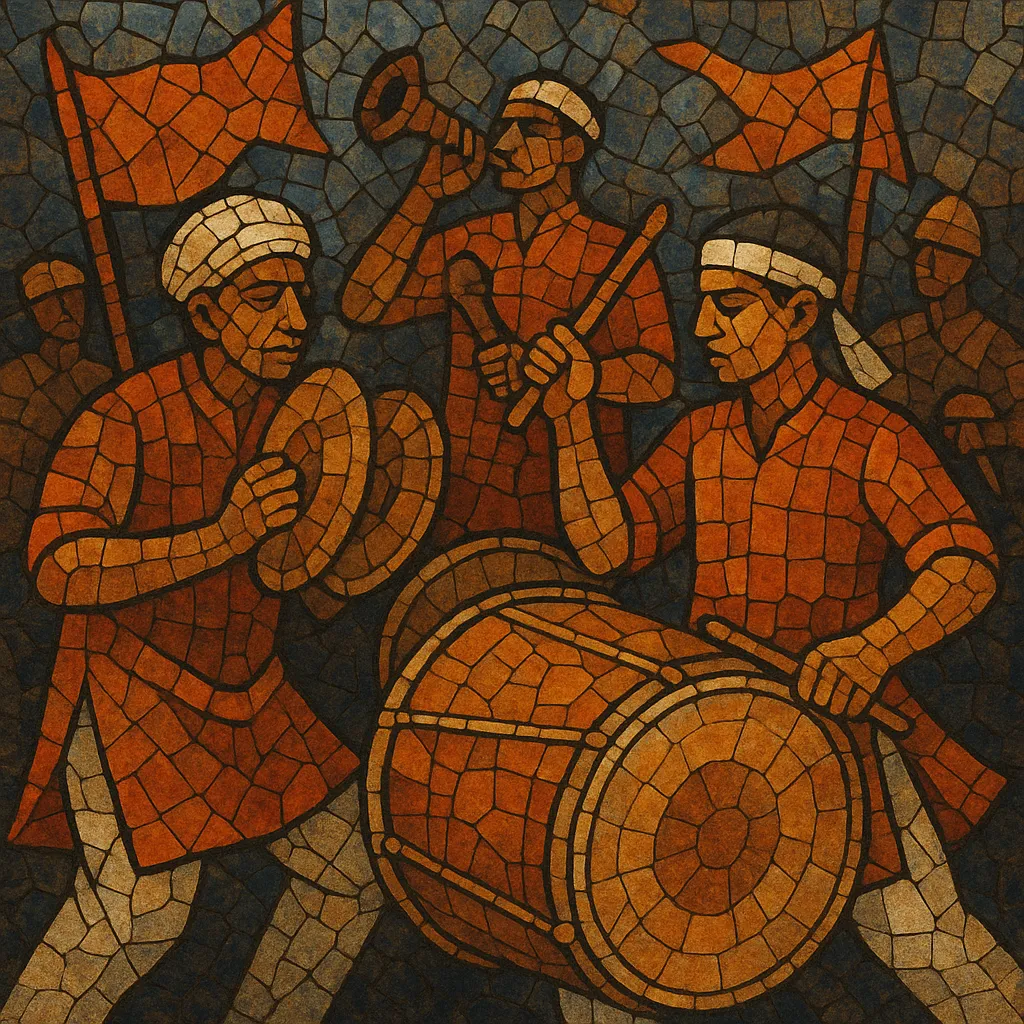Dhol tasha is a high-energy Maharashtrian percussion ensemble tradition performed in public processions, especially during Ganesh Chaturthi, Navratri, and victory parades. The core instruments are the double-headed dhol (a large barrel drum) and the high-pitched tasha (a metal kettle/snare-like drum). Ensembles are often augmented by clashing hand-cymbals (jhanj/taal), the tutari (a natural trumpet used for ceremonial calls), and flag-bearers who choreograph formations.
Musically, dhol tasha emphasizes unison, antiphonal calls, and tightly drilled rhythmic cadences in steady marching tempi. The sound is deliberately massed, creating a powerful wall of drums that builds intensity through repeating motifs, dynamic swells, call-and-response breaks, and synchronized stick choreography. As a community practice, troupes (pathaks) train for months to perform with discipline, visual unity, and cultural pride.
Dhol and tasha have deep roots in the Indian subcontinent, with antecedents in court, temple, and military drumming. In Maharashtra, related drums were used in Maratha-era processions and martial displays (17th–18th centuries), where loud kettledrums and barrel drums signaled movement and conveyed authority.
The modern public-facing form of dhol tasha coalesced with the rise of sarvajanik (public) Ganesh festivals in the 1890s, when processional music became a rallying point for social and cultural cohesion. Ensembles standardized sections of dhols, tashas, and cymbals, adopting marching formations and repeatable signals so large groups could move through crowded streets in sync.
From the mid-20th century onward—especially in cities like Pune, Mumbai, and Nashik—community troupes (pathaks) formalized training cycles, uniforms, and repertoires. Distinct calls, breaks, and cadences spread across troupes, while tutari fanfares and flag choreography added ceremonial grandeur. All-women pathaks further expanded participation and visibility.
Since the 1990s–2010s, dhol tasha has surged in popularity, with hundreds of pathaks performing during Ganesh immersion processions and other civic events. Social media, competitions, and collaborations with film and television amplified the style’s reach. While essentially a percussion tradition, its cadences have influenced cinematic festival cues and stage spectacles.


